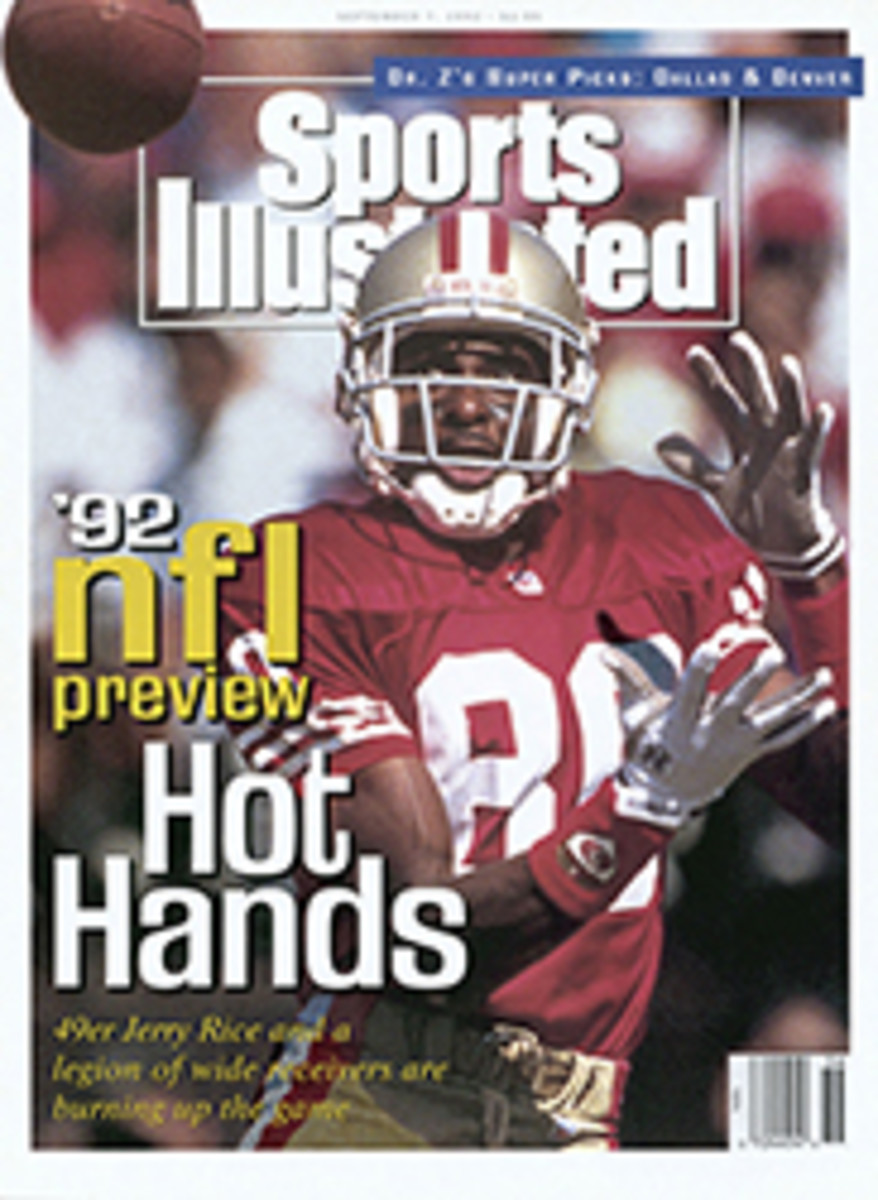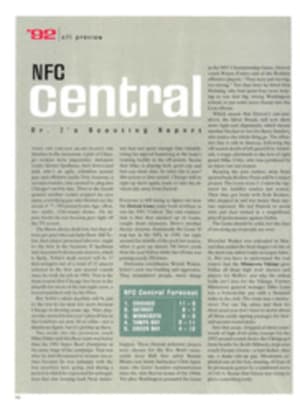
White Guys Can't Run
The Taunts start early for Phoenix Cardinal wide receiver Ricky Proehl on most fall Sundays. "Hey, slow white boy!" opposing cornerbacks scream at him. "You ain't going anywhere today. You ain't catching nothing!"
Proehl thinks the Philadelphia Eagle defensive backs are the loudest, but they aren't alone in singling him out—Proehl's one of only five white wide receivers who were starters for most or all of last season. "Most cornerbacks take it personally when they get beat by a white guy," Proehl says. "Even in practice, when I beat a corner deep, I get compliments. It's like I'm not supposed to do it."
Proehl says he feels a kinship with actor Woody Harrelson, because the message the league is sending to young white receivers these days is "White men can't run," at least not fast enough to play in today's offensive schemes. White wideouts led the NFL in receptions in 1951, '61, '71 and '81. In 1991 the leading white receivers—Proehl and Tom Waddle of the Chicago Bears, each with 55 receptions—tied for 38th. What's more, in 1981 four of the top 14 wideouts were white. Ten years later, only five of the first 68 were white.
Proehl, Waddle, Don Beebe of the Buffalo Bills, Michael Young of the Denver Broncos and Robb Thomas of the Kansas City Chiefs entered the '92 preseason as the only white players among the 60 or so first-string wideouts in the league, but third-year man Proehl was the only one of the five secure in the knowledge he would be a starter this year.
After having been cut three times in 1989 and '90 by Chicago, Waddle became a regular last year only after Ron Morris and Anthony Morgan were injured early in the season; Waddle won a starting job in camp this year. Beebe got plenty of work in 1991, including seven starts before breaking his collarbone, because the Bills used a three-receiver set. But his playing time will be cut if Buffalo sticks to its plan to use a two-back attack regularly this season. Young was a free-agent pickup by Denver last year, and he stepped into a starter's role when Vance Johnson was sidelined most of the season with a knee injury. Young had back surgery in the spring and will not open the season on the Broncos' active roster. Thomas, who started the Chiefs' first 12 games in '91 before spraining his ankle, was unable to win back his job in training camp this year.
"You don't get the white receiver running 4.5 in the 40," says Miami Dolphin receiver coach Larry Seiple. "Twenty years ago, when it was less of a speed game, you could use Howard Twilley, who ran 4.7. Today you need speed guys, and obviously the black guys are faster."
"It's not racial," says Buffalo general manager Bill Polian. "It's socioeconomic. For the first time this year, I saw black wide receivers running 4.7 at the scouting combine. It doesn't matter if they're black or white. It's whether they run all the time and develop their skills, or whether they're playing golf and getting mommy to drive them to the mall."
The preference for blacks is not restricted to the NFL. "When I was in high school trying to get a college scholarship, most of the college coaches would shy away when they found out I was white," says Proehl. And according to New York Jet assistant coach Kippy Brown, when he was a Tennessee assistant in 1990, the other Volunteer coaches "looked at me like I was nuts" when they found out he was recruiting a white receiver. That player, Craig Faulkner, is a starter for Tennessee this fall.
Nineteen years ago Brown became the first black quarterback in Memphis State history, and he equates the blacks-can't-play-quarterback controversy of years past to the white receivers' situation of today. "The myth about black quarterbacks has been exploded, and it's been proven you have to make decisions based on ability, not skin color," Brown says. "But the mentality of a lot of people in this business is that the white kids can't play certain positions."
The overwhelming need for speed at receiver and cornerback can be traced to NFL rule changes enacted in 1978. Offensive linemen were allowed to use their hands to thwart onrushing defenders, and defensive backs were restricted to bumping wideouts in an area within five yards of the line of scrimmage. All of a sudden, the quick, small black wideout became a huge factor, and an adjustment had to be made on the other side of the ball. At the end of last season the NFL had only six whites who were starting at defensive back—and none of them were cornerbacks.
Proehl sums up the situation best: "Now I can understand how a black guy feels when he walks into a bar and everyone stares at him because he's the only black guy in the place."
[originallink:10681311:711121]
PHOTO
RICK STEWART/ALLSPORT USA
Proehl is one of two white wide receivers certain to start.

